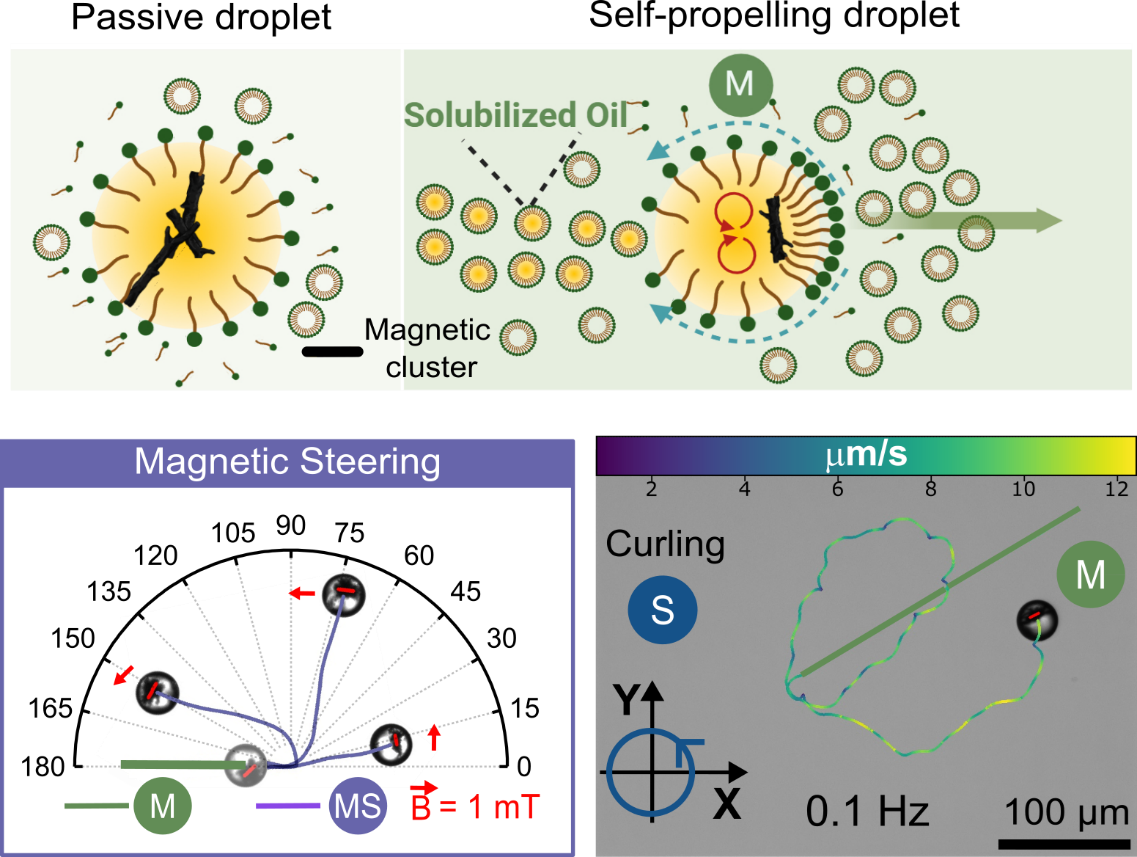Enhanced Flexible Mold Lifetime for Roll‐to‐Roll Scaled‐Up Manufacturing of Adhesive Complex Microstructures
Bioinspired Microstructured Adhesives with Facile and Fast Switchability for Part Manipulation in Dry and Wet Conditions
Smart Materials for manipulation and actuation of small-scale structures
3D nanofabrication of various materials for advanced multifunctional microrobots
Liquid Crystal Mesophase of Supercooled Liquid Gallium And Eutectic Gallium–Indium
Machine Learning-Based Pull-off and Shear Optimal Adhesive Microstructures
Information entropy to detect order in self-organizing systems
Individual and collective manipulation of multifunctional bimodal droplets in three dimensions
Microrobot collectives with reconfigurable morphologies and functions
Self-organization in heterogeneous and non-reciprocal regime
Biomimetic Emulsion Systems
Giant Unilamellar Vesicles for Designing Cell-like Microrobots
Bioinspired self-assembled colloidal collectives drifting in three dimensions underwater
Biomimetic Emulsion Systems

Oil droplets in aqueous solutions are physically intelligent autonomous material systems. The interfacial activity of surfactant molecules induces fluidic flows within droplets, rendering them with life-like chemotactic locomotion. Such droplets can successfully navigate complex confined spaces and demonstrate emergent collective behaviors. Thus, flow-driven droplets are a minimalistic representation of single-celled microorganisms. Simultaneously, their soft, deformable nature combined with autonomous locomotion offers a synthetic route toward adaptive microrobots. Therefore, we develop material agnostic strategies to realize controllable self-propelling droplets while retaining their inherent properties ([]). By integrating a responsive boundary (magnetic cluster) inside the droplets, we study the solid-fluid orientational coupling that gives us emergent control over the chemotactic propulsion direction using weak external magnetic fields. With the help of continuous perturbation, we achieve multiple and switchable locomotion modalities. For instance, a droplet's inherent ballistic propulsion switches to curling motion under in-plane rotating magnetic fields. Furthermore, we investigate the influence of such perturbations on the collective dynamics of these droplets. We study the pair/ line formation of inherently repulsive droplets, enabling us to externally guide the pair's trajectory and direction of the line growth. Using our strategy, we can reorient, translate, rotate, and even split collectives of hydrodynamically stabilized droplets. Finally, we perturb/ control the chemically interacting predator-prey droplet pairs by externally influencing predator droplets.
Members
Publications



